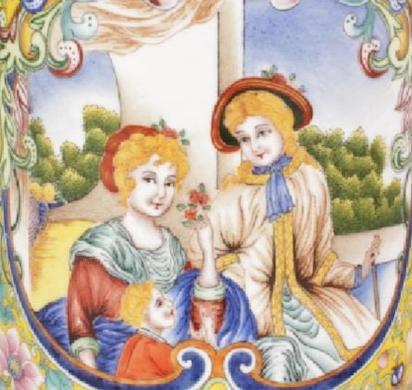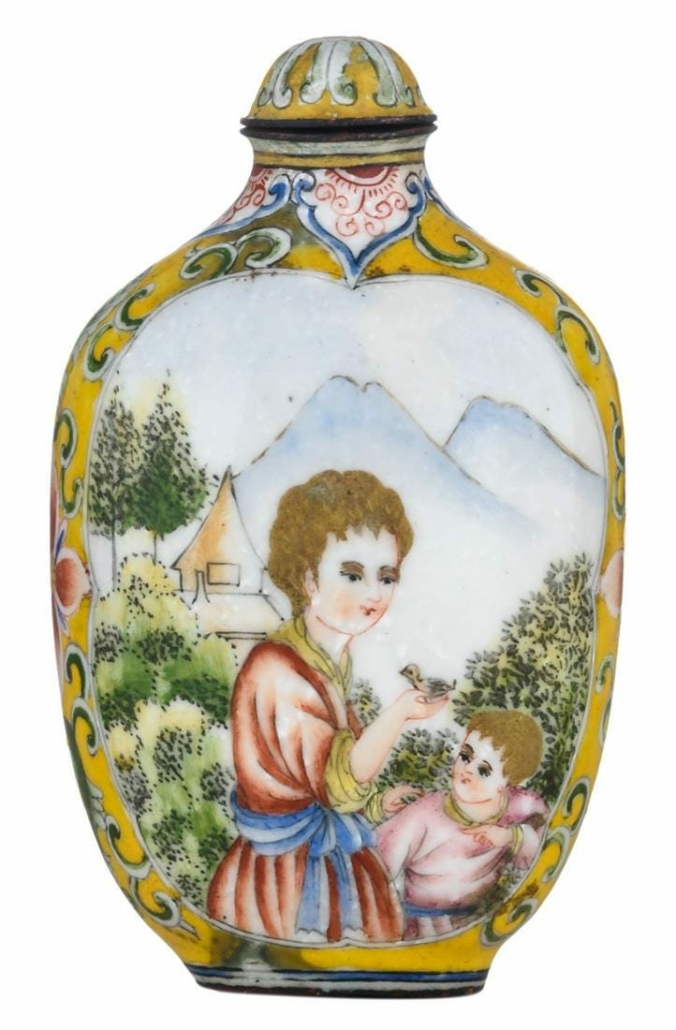
NEW YORK — Few cultures are immune to fascination with “the other,” and Europeans were definitely “the other” in the minds of generations of Chinese artists. They were keenly interested in foreigners and Western art styles and motifs, and created gorgeous enameled objects – some copper, some porcelain – featuring European scenes and portraits. Chinese artists made canvases out of snuff bottles, teapots, vases, plates, ewers, goblets and more, polychrome-enameling them with images of Europeans clad in fancy dress and shown performing everyday activities or starring in whimsical scenes. Unsurprisingly, such pieces were dubbed “European subject” or “European portrait” wares. They were made for the imperial court as well as domestic and export markets.
Chinese enamel production and artistry was at a high point during the Ming dynasty and continued well into the Qing dynasty and through the Qianlong empire. The fall of Constantinople to the Ottoman Empire in May 1453 was a watershed moment that prompted a flood of Western immigration into China and ushered in this era.
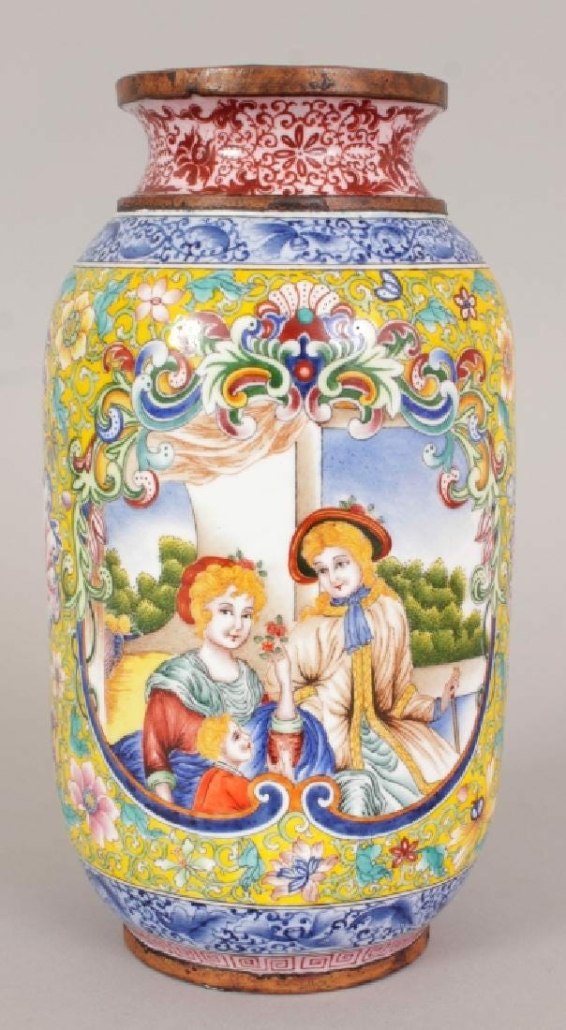
Canton and Beijing were centers of enamel production in China, and many enamel wares are often lumped together under the general term “Canton enamel.” Although painted enamel techniques were brought East from France — having been developed and perfected in Limoges in the late 1400s — the techniques used by Chinese artists were very similar to their European roots rather than customized to fit traditional Asian art styles. Instituto Cultural in Macau, China, notes on its website that the era of these enamels was fairly short-lived, and by 1795, the final year of the Qianlong empire, production commissions were dwindling.
Enamel objects from China boast strikingly innovative and detailed compositions as well as bold uses of color, such as multi-tonal swatches of blue that can range from a dark navy to a pale azure. The best examples demonstrate the artist’s use of techniques such as shading, especially on faces, and linear perspective, including the Western tradition of using a vanishing point in landscape compositions. Works that reflect the high artistic standards of the Qianlong period can be seen in enameling that is precisely but delicately rendered. Such items can bring upwards of $50,000, while most examples today bring several thousand dollars each.
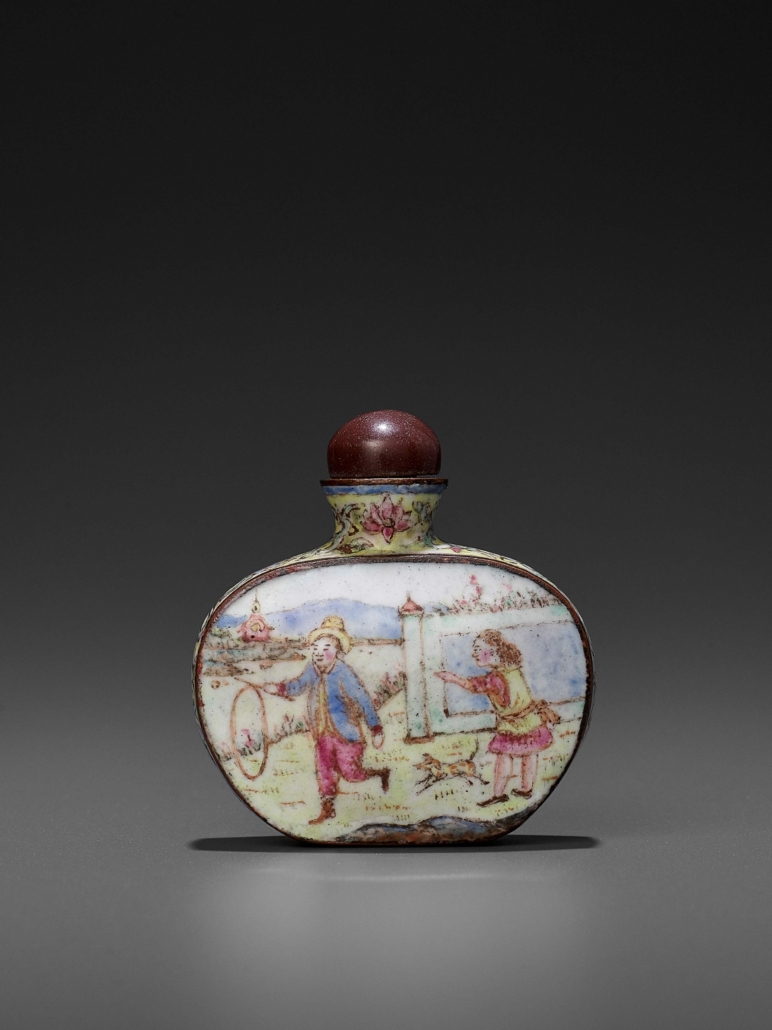
According to the website of Jorge Welsh, a gallery with outposts in London and Lisbon that specializes in Chinese porcelain, it is hard to date exactly when enamel production began in China. It seems likely, however, that high quality pieces were not made prior to 1718, given that few examples are seen in famille verte. “The vast majority of Chinese painted enamels on copper are decorated in the famille rose palette identified with the Yongzheng and Qianlong periods,” the gallery writes.
Early European traders and Jesuit missionaries often brought books or pictures to Chinese artists to emulate. Common European subjects appearing on enameled objects were frequently modeled after popular Western paintings and prints. Artists drew inspiration from literature, myths, and history, among other sources. Figures are often pictured outdoors in situations that range from courting scenes to children playing to people interacting with animals.
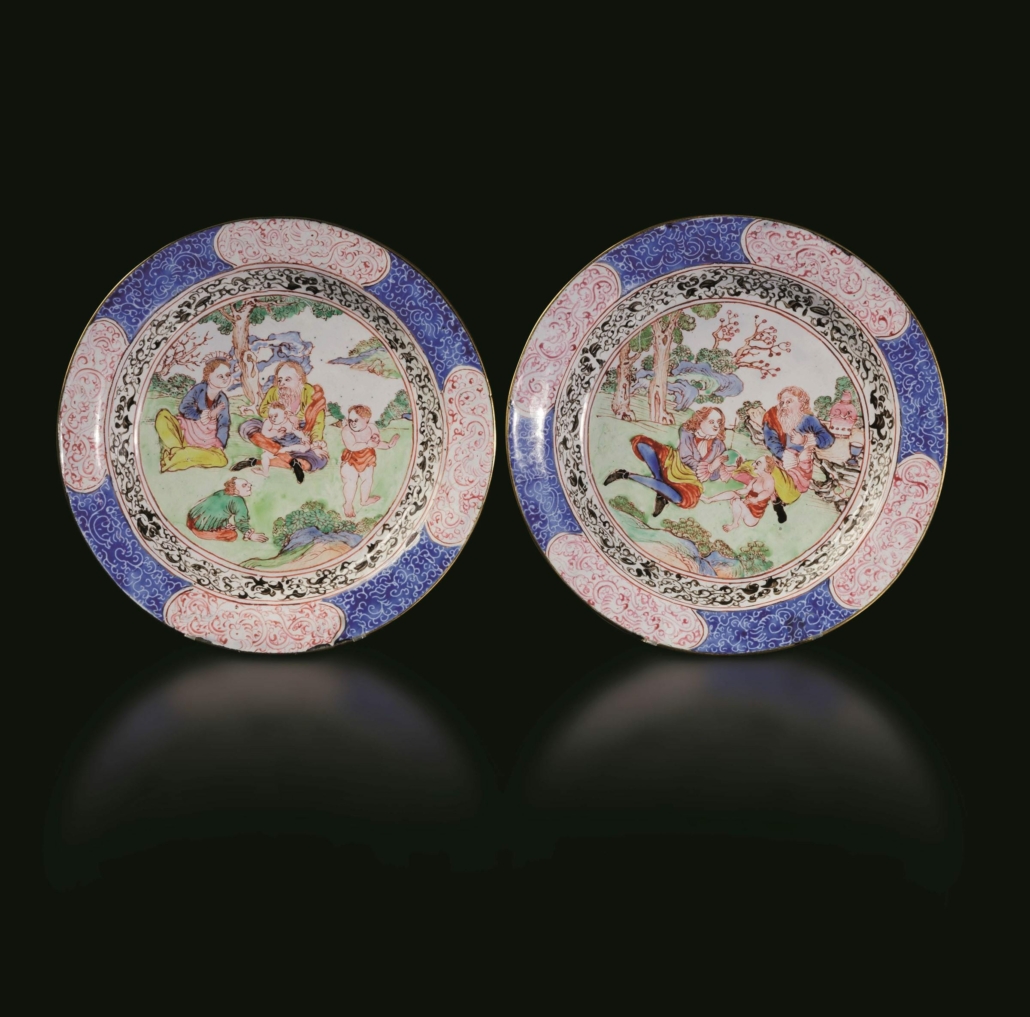
A Canton enamel “European subject” snuff bottle dating to 1735-1796 and featuring a four-character Qianlong mark and period sold in March 2021 for €4,500 (or $5,293) plus the buyer’s premium, at Galerie Zacke in Vienna. Its highly detailed scene with fine enameling on both sides portrays Europeans training dogs in a serene landscape, and the neck and shoulders feature an exuberant floral border.
A fine Canton enamel vase with yellow ground, decorated with two panels of well-dressed European ladies and a small child relaxing outdoors, brought $3,330 plus the buyer’s premium in June 2017 at John Nicholson Auctioneers.
Beijing or imperial enamel is also desirable to collectors. A finely painted Beijing enamel yellow ground snuff bottle, picturing a Western mother and child, earned $3,764 plus the buyer’s premium in December 2019 at Carlo Bonte Auctions.
The high point in the LiveAuctioneers price results database belongs to a Beijing enamel snuff bottle with a detailed European portrait that made $70,000 in September 2014 at Sun Auction NY. More recently, the standout price of $22,000 was achieved in June 2017 at Tremont Auctions by a garlic mouth famille rose porcelain vase decorated with European figures in a landscape, along with a poem and artists seals. Both prices quoted are not inclusive of the buyer’s premium.
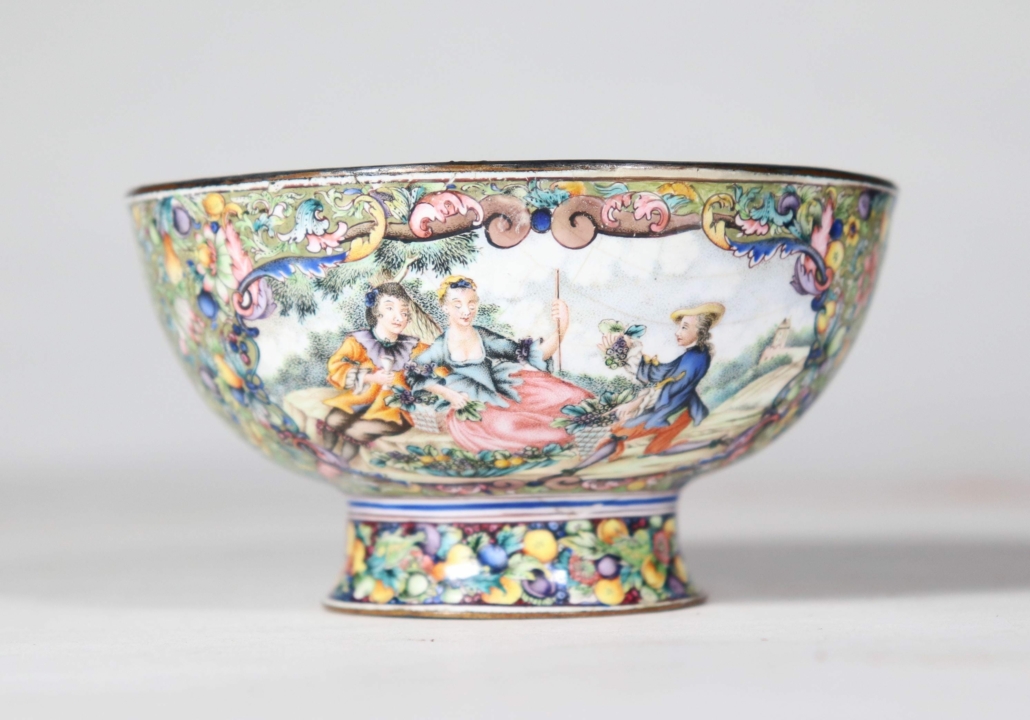
Other forms of Chinese enamel include cloisonne and champleve. While they are unquestionably desirable to collectors, the East-meet-West style of decoration represented by Canton or Beijing enamel stands alone as a testament to the way one culture views another.
# # #


